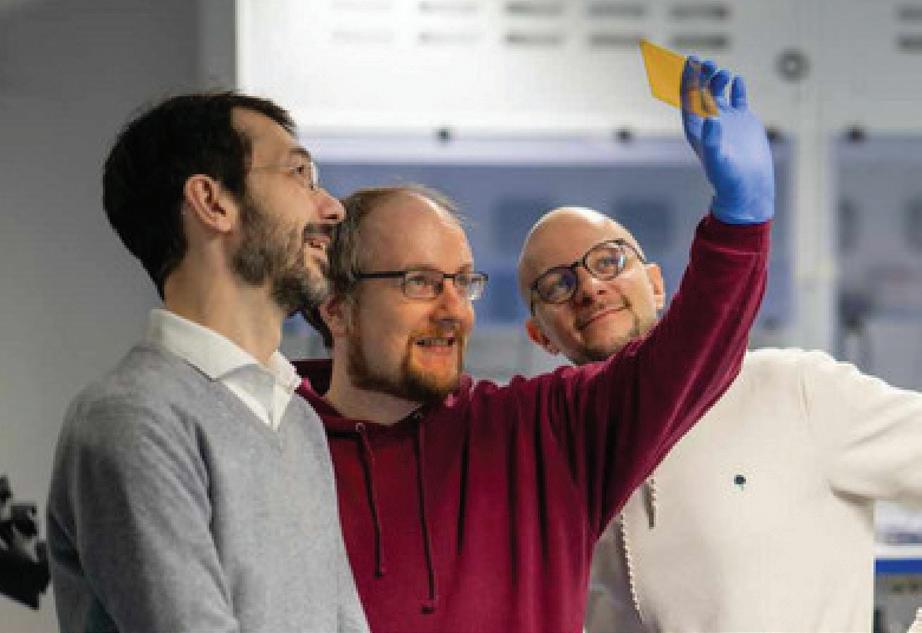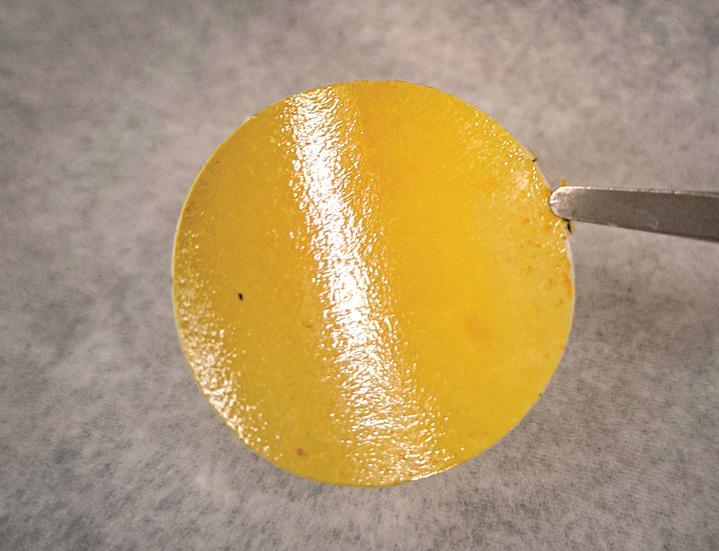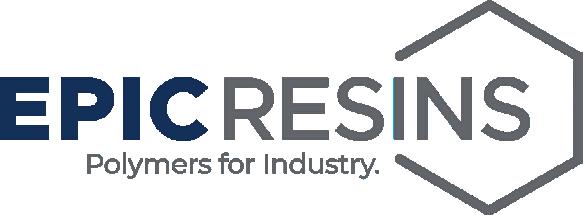
10 minute read
EMERGENCE
Compiled by Caryn Smith, IFN Chief Content Officer
I
International Filtration News Explores Trending Innovation
FN highlights significant research from universities and institutions around the world. If you are a part of a project you would like to highlight, email csmith@inda.org. Please write “IFN Emerging Research Submission” in your subject line in order to apply. Please send a completed press release and/or summary of the research as you would want it to be printed, a link to the university online story (if applicable), and all high resolution photographs/charts/graphs, short researcher bio(s). All selections could be edited for length.
Hanyang University
Researchers Discovered New Breakthrough Catalyst for Cheaper Green Hydrogen Production
More than $9 Million awarded to high school scientists and engineers at the Regeneron International Science and Engineering Fair 2024.
By Jin-Mo An, Hanyang University
Hydrogen is a clean energy source that can help reduce greenhouse gas emissions. However, its large-scale production is currently impeded by the need for expensive and rare catalysts required for electrochemical water-splitting. In a new study, researchers have developed novel tunable boron-doped cobalt phosphide nanosheet-based electrocatalysts using metal-organic frameworks. These electrocatalysts offer high efficiency, low cost, and long-term stability, with the potential to enable large-scale hydrogen production.
To reduce greenhouse gas emissions and combat climate change, the world urgently needs clean and renewable energy sources. Hydrogen is one such clean energy source that has zero carbon content and stores much more energy by weight than gasoline. One promising method for producing hydrogen is electrochemical water-splitting, a process that utilizes electricity to break down water into hydrogen and oxygen.
Unfortunately, the large-scale production of hydrogen using this method is currently unfeasible due to the need for catalysts made from expensive, rare-earth metals. Among these, transition metal phosphides (TMPs) have attracted considerable attention as catalysts for the hydrogen-generating side of the process, known as hydrogen evolution reaction (HER), due to their favorable properties. However, they perform poorly in the oxygen evolution reaction (OER), which reduces overall efficiency.
In a recent breakthrough, a research team led by Professor Seunghyun Lee, including Mr. Dun Chan Cha, from the Hanyang University ERICA campus in South Korea, has developed a new type of tunable electrocatalyst using B-doped cobalt phosphide (CoP) nanosheets. Prof. Lee explains, “We have successfully developed cobalt phosphides-based nanomaterials by adjusting boron doping and phosphorus content using metal-organic frameworks. These materials have better performance and lower cost than conventional electrocatalysts, making them suitable for large-scale hydrogen production.” p The novel electrocatalysts, developed using metal-organic frameworks, exhibit excellent electrocatalytic performance and high efficiency, while also being cost-effective. These electrocatalysts have the potential to enable large-scale hydrogen production, which can help in reducing greenhouse gas emissions. Hanyang University
The researchers used an innovative strategy to create these materials, using cobalt (Co) based metal-organic frameworks (MOFs). “MOFs are excellent precursors for designing and synthesizing nanomaterials with the required composition and structures,” notes Mr. Cha. First, they grew Co-MOFs on nickel foam (NF). They then subjected this material to a post-synthesis modification (PSM) reaction with sodium borohydride (NaBH4), resulting in the integration of B. It was followed up by a phosphorization process using different amounts of sodium hypophosphite (NaH2PO2), resulting in the formation of three different samples of B-doped cobalt phosphide nanosheets (B-CoP@NC/NF).
Experiments revealed that all three samples had a large surface area and a mesoporous structure, key features that improve electrocatalytic activity. As a result, all three samples exhibited excellent OER and HER performance. An alkaline electrolyzer developed using the B-CoP0.5@NC/NF electrodes showed a cell potential of just 1.59 V at a current density of 10 mA cm-2, lower than many recent electrolyzers. Additionally, at high current densities above 50 mA cm-2, it even outperformed the state-of-the-art RuO₂/NF(+) and 20% Pt-C/NF(−) electrolyzer while also demonstrating long-term stability, maintaining its performance for over 100 hours. Density functional theory (DFT) calculations supported these findings and clarified the role of B-doping and adjusting P content.
“Our findings offer a blueprint for designing and synthesizing next-generation high-efficiency catalysts that can drastically reduce hydrogen production costs,” says Prof. Lee. “This is an important step towards making large-scale green hydrogen production a reality, which will ultimately help in reducing global carbon emissions and mitigating climate change.”
READ: https://onlinelibrary.wiley.com/doi/10.1002/ smll.202500334
UNIVERSITY OF COLOGNE
Federal Ministry Supports Start-Up Project on Pioneering Filter Technology
Novel spectral filters will enable future sensors to work more accurately and reliably. EXIST-FT funding from the Federal Ministry for Economic Affairs and Climate Action promotes outstanding, research-based start-up projects.
Aresearch team from the University of Cologne has secured 1.1 million euros for the PoLightFilters start-up project from the EXIST-FT funding program of the Federal Ministry for Economic Affairs and Climate Action (BMWK). With the development of a fundamentally novel technology for light filtering that significantly reduces optical noise, the project is setting new standards in thin- film optics. The development of thin-film polariton opens up new avenues for use in photonics, sensors, optical imaging, and display technology. The team at the Humboldt Centre for Nano- and Biophotonics comprises Dr. Florian Le Roux, Dr. Andreas Mischok, BSc Elena von der Heyden, and Humboldt Professor Malte Gather. “I extend my congratulations to the researchers on their success. The funding underlines the fact that cutting-edge research on future-focused topics and innovative technologies is being undertaken at our university,” says Professor Dr. Joybrato Mukherjee, Rector of the University of Cologne.

Optical filters are essential in many applications. However, until now, conventional filters show a strong decrease in performance when light hits them at different angles because the color of the light passing through the filter changes depending on the viewing angle. This leads, for example, to a change in the perceived color of computer and smartphone displays and restricts the field of view over which sensors provide accurate data. The innovative filter technology overcomes this fundamental problem by utilizing the quantum mechanical interaction of light with electronically excited states in thin organic layers. As part of the PoLightFilters project, polariton filters will be brought to market readiness.
Thanks to the new filters, optical systems can be used in more versatile and reliable ways. The use of organic materials also enables flexible tuning of spectral properties, i.e. the color of transmitted or reflected light. It offers lower costs as well as reduced energy consumption during the production of large-area filters that can be adapted to different component shapes.
The outstanding angular stability of the newly developed filter technology offers considerable added value, particularly for fluorescence microscopy or sensor applications such as light detection and ranging (LiDAR) systems. Specifically, this enables increased accuracy, range, and readout speed, setting new standards in automation and process optimization. For example, with the PoLightFilters technology, the number of sensors required for industrial monitoring can be considerably reduced, resulting in significant cost savings. Further areas of application include microscopy and biomedical research.
In addition to the ongoing development of the patent-pending thin-film filter technology, a particular focus of the funded project is on optimizing and scaling the production. In parallel to the hardware development, the existing software package is being further improved to enable a partially automated filter design.
“With funding from the EXIST transfer of research programme, the PoLightFilters project is taking a decisive step towards market innovation. In addition to the direct application in LiDAR technology, the filter innovation is intended to serve as a model case for further applications. Through the successful combination of scientific research, technical development and entrepreneurial implementation, which is supported by the University of Cologne’s Transfer Department and the Transfer Scouts of the Gateway Excellence Start-up Center, we will be making a long-lasting contribution to the optimization of modern optical systems,” says Dr. Andreas Mischok.
READ: https://uni-koeln.de/en/university/news/ news/news-detail/strong-filters-innovativetechnology-for-better-displays-and-optical-sensors p MIT engineers developed a membrane, pictured, that filters the components of crude oil by their molecular size, an advance that could dramatically reduce the amount of energy needed for crude oil fractionation. : Courtesy of the Researchers

Massachusetts Institute Of Technology
A New Approach Could Fractionate Crude Oil Using Much Less Energy
MIT researchers’ new membrane separates different types of fuel based on their molecular size, eliminating the need for energy-intensive crude oil distillation.
Anne Trafton, MIT News
Separating crude oil into products such as gasoline, diesel, and heating oil is an energy-intensive process that accounts for about 6 percent of the world’s CO2 emissions. Most of that energy goes into the heat needed to separate the components by their boiling point.
In an advance that could dramatically reduce the amount of energy needed for crude oil fractionation, MIT engineers have developed a membrane that filters the components of crude oil by their molecular size.
“This is a whole new way of envisioning a separation process. Instead of boiling mixtures to purify them, why not separate components based on shape and size? The key innovation is that the filters we developed can separate very small molecules at an atomistic length scale,” says Zachary P. Smith, an associate professor of chemical engineering at MIT and the senior author of the new study.
The new filtration membrane can efficiently separate heavy and light components from oil, and it is resistant to the swelling that tends to occur with other types of oil separation membranes. The membrane is a thin film that can be manufactured using a technique that is already widely used in industrial processes, potentially allowing it to be scaled up for widespread use.
Taehoon Lee, a former MIT postdoc who is now an assistant professor at Sungkyunkwan University in South Korea, is the lead author of the paper, which appears today in Science.

Oil Fractionation
Conventional heat-driven processes for fractionating crude oil make up about 1 percent of global energy use, and it has been estimated that using membranes for crude oil separation could reduce the amount of energy needed by about 90 percent. For this to succeed, a separation membrane needs to allow hydrocarbons to pass through quickly, and to selectively filter compounds of different sizes.
Until now, most efforts to develop a filtration membrane for hydrocarbons have focused on polymers of intrinsic microporosity (PIMs), including one known as PIM-1. Although this porous material allows the fast transport of hydrocarbons, it tends to excessively absorb some of the organic compounds as they pass through the membrane, leading the film to swell, which impairs its size-sieving ability.
To come up with a better alternative, the MIT team decided to try modifying polymers that are used for reverse osmosis water desalination. Since their adoption in the 1970s, reverse osmosis membranes have reduced the energy consumption of desalination by about 90 percent – a remarkable industrial success story.
The most commonly used membrane for water desalination is a polyamide that is manufactured using a method known as interfacial polymerization. During this process, a thin polymer film forms at the interface between water and an organic solvent such as hexane. Water and hexane do not normally mix, but at the interface between them, a small amount of the compounds dissolved in them can react with each other.
In this case, a hydrophilic monomer called MPD, which is dissolved in water, reacts with a hydrophobic monomer called TMC, which is dissolved in hexane. The two monomers are joined together by a connection known as an amide bond, forming a polyamide thin film (named MPD-TMC) at the waterhexane interface.
While highly effective for water desalination, MPD-TMC doesn’t have the right pore sizes and swelling resistance that would allow it to separate hydrocarbons.
To adapt the material to separate the hydrocarbons found in crude oil, the researchers first modified the film by changing the bond that connects the monomers from an amide bond to an imine bond. This bond is more rigid and hydrophobic, which allows hydrocarbons to quickly move through the membrane without causing noticeable swelling of the film compared to the polyamide counterpart.
“The polyimine material has porosity that forms at the interface, and because of the cross-linking chemistry that we have added in, you now have something that doesn’t swell,” Smith says. “You make it in the oil phase, react it at the water interface, and with the crosslinks, it’s now immobilized. And so those pores, even when they’re exposed to hydrocarbons, no longer swell like other materials.”
The researchers also introduced a monomer called triptycene. This shapepersistent, molecularly selective molecule further helps the resultant polyimines to form pores that are the right size for hydrocarbons to fit through.
This approach represents “an important step toward reducing industrial energy consumption,” says Andrew Livingston, a professor of chemical engineering at Queen Mary University of London, who was not involved in the study.
“This work takes the workhorse technology of the membrane desalination industry, interfacial polymerization, and creates a new way to apply it to organic systems such as hydrocarbon feedstocks, which currently consume large chunks of global energy,” Livingston says. “The imaginative approach using an interfacial catalyst coupled to hydrophobic monomers leads to membranes with high permeance and excellent selectivity, and the work shows how these can be used in relevant separations.”
Efficient Separation
When the researchers used the new membrane to filter a mixture of toluene and triisopropylbenzene (TIPB) as a benchmark for evaluating separation performance, it was able to achieve a concentration of toluene 20 times greater than its concentration in the original mixture. They also tested the membrane with an industrially relevant mixture consisting of naphtha, kerosene, and diesel, and found that it could efficiently separate the heavier and lighter compounds by their molecular size.
If adapted for industrial use, a series of these filters could be used to generate a higher concentration of the desired products at each step, the researchers say.
“You can imagine that with a membrane like this, you could have an initial stage that replaces a crude oil fractionation column. You could partition heavy and light molecules and then you could use different membranes in a cascade to purify complex mixtures to isolate the chemicals that you need,” Smith says.
Interfacial polymerization is already widely used to create membranes for water desalination, and the researchers believe it should be possible to adapt those processes to mass produce the films they designed in this study.
“The main advantage of interfacial polymerization is it’s already a well-established method to prepare membranes for water purification, so you can imagine just adopting these chemistries into existing scale of manufacturing lines,” Lee says.
The research was funded, in part, by ExxonMobil through the MIT Energy Initiative.
READ: https://news.mit.edu/2025/new-approachcould-fractionate-crude-oil-using-less-energy-0522
Do you have research to share? Email csmith@inda.org with details!











